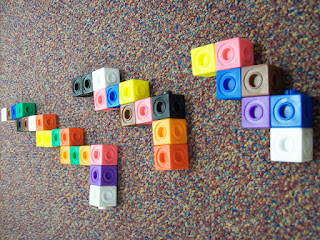For example, during all-school gatherings, I knew that any time we asked students to move we would run the risk of delay, injury and/or misbehavior. If I would play music, I knew that PreK would need help in getting settled back down. If I needed students to exit so as to get back to class quickly, I needed to give clear instructions and have a plan for doing so. If our ceiling-mounted projector wouldn't display the presentation, I had a portable one with me and available so that we could continue with our program somewhat uninterruptedly.
 |
| https://commons.wikimedia.org/wiki/File%3A14_06_28_Detour_Sign_Dunedin_FL_01.jpg |
In his book, The Power of Habit: Why We Do What We do in Life and Business, Charles Duhigg calls these potential pitfalls inflection points. These inflection points are the moments that would derail a presentation or result in a student getting pushed or tripped.
Duhigg recounts a study from Scotland in the 1990s, where researcher discovered that some patients who had undergone hip or knee replacement surgery would start to walk again twice as fast as others. The researcher uncovered that those quicker-to-walk patients wrote out detailed plans that focused heavily on what they would do when they encountered inflection points - moments of extreme pain or frustration that would cause them to want to quit or give up. From something as simple as taking the first step after getting up to mapping out every potential obstacle and its corresponding contingency plan, those patients who intentionally planned for setbacks were more likely to overcome them (p. 142 - 143).
Having a plan for painful inflection points is one of the ingredients that makes companies like Starbucks, the Container Store and Deloitte Consulting such shining business examples of success. Starbucks' LATTE method for dealing with an angry customer (Listen, Acknowledge, Take Action, Thank Them, Explain the Cause) and repetitively role-playing potentially stressful scenarios with employees, helps to ensure that Starbucks stays in, "the people business serving coffee" and not the other way around ("the coffee business serving people") (p . 145).
Excellence happens on purpose and as educators we must purposefully plan for those potential speed bumps, road blocks, detours and accidents - inflection points - that we may encounter and then script out how we will respond should one of these inflection points occur.
As educators, considering situations like angry parents, flopped lessons, unruly students, or a last-minute schedule change and having a specific plan of action for when these and other inflection points occur can help maintain professionalism, maximize instructional time, and enhance student learning. In this way, we are not planning for our lessons, assemblies or any other school activities to go poorly. Instead, we have a plan to get things back on track in the event that something does go wrong.
Having a plan and rehearsing it for automaticity can make it much more likely for it to be executed when inflection points arise. This can happen on the school (what would happen in a real fire that would block a potential exit path?), classroom (how do you respond to someone who is being mean to you or to others), and individual levels (for administrators, teachers and students).
If check-points help us to take stock of where we've been and ensure we continue to head where we intended, inflection points, when strategically anticipated and accounted for, will do little to keep us from reaching our destination.
It's yet another lesson in building self-awareness and how harnessing this ability to meta-cognitively navigate life can lead to great success.
Similarly, anticipating moments of weakness and temptation (exhaustion, stress, extreme emotion, boredom, contextual cues) and then having a plan for those inflection points can likewise keep us moving in a positive spiritual direction. If you're trying to lose weight, going to a fast food spot is a slippery - and not just because of the grease - slope. If you're hoping to remain disciplined in your prayer life using an app on your phone to pray may lead to distraction or a tug to wander to other apps or sites. Anticipating these inflection points and then having a plan to prevent or mitigate them - opting for a side salad instead of fries, turning off notifications while praying - can help ensure that our behaviors align with who we want to be.
St. Josemaria Escriva called the moment when you first wake up in the morning the heroic minute:
The heroic minute. It is the time fixed for getting up. Without hesitation: a supernatural reflection and... up! The heroic minute: here you have a mortification that strengthens your will and does no harm to your body (#206).Too often we hit snooze, crawl back under the covers and push off the start of our day. This daily inflection point can cause us to miss workouts, arrive late to work, and potentially set off a chain reaction of cutting corners throughout the course of our entire day.
In this way, every inflection point carries with it a heroic moment - the moment where we can either allow the inflection point to make us cower under the covers of the challenge or rise up and conquer it.
Believe that you can do hard things and then get to work doing them.
Be purposeful.
Be prepared.
Be heroic.
Duhigg, C. (2014). The Power of Habit: Why We Do What We Do in Life and Business. New York, NY: Random House Trade Paperbacks.

